Have you ever thought about the possibility of not having to wear reading glasses after cataract surgery? The new premium lens implants can help you see at many distances and can give you the opportunity to not have to depend on eyewear. To learn more about your options, click on the links below.
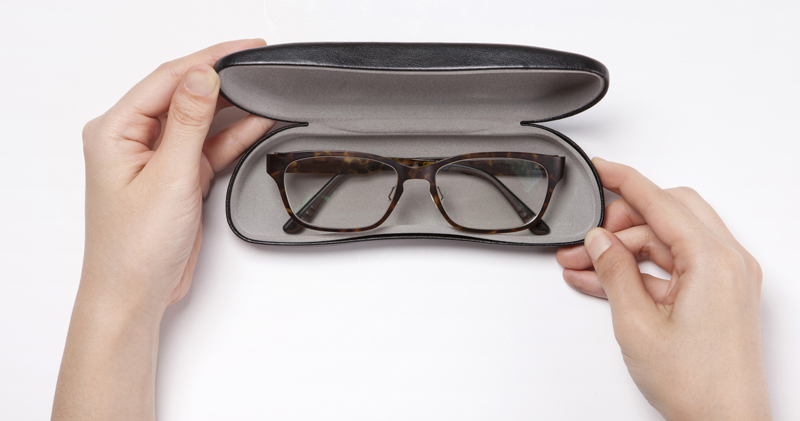
PanOptix Trifocal Lens
Are you or a loved one considering cataract surgery? Berg Feinfield Vision Correction is now offering our cataract patients the new and revolutionary PanOptix trifocal lens!
The PanOptix trifocal lens is the first trifocal IOL to become available. This is a premium IOL that’s implanted during cataract surgery.
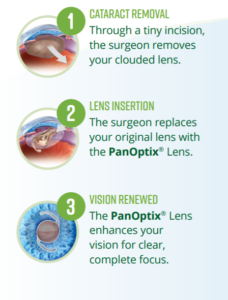
PanOptix Trifocal Lens FAQs
Q. What does trifocal lens mean?
A. The PanOptix is a trifocal IOL. These lenses can enhance your vision at all ranges. This includes close up, intermediate, and far away, meaning all distances are covered.
With the trifocal lens, you’ll be able to see while doing activities that you need a range of vision to complete.
That means you will be able to:
- See distant objects when driving or attending a sports event
- Perform close-up activities like reading a book or cellphone screen
- See at middle distances, like when you’re using a computer
Many cataract surgeries use a standard monofocal lens. Monofocal lenses only help you see well at a distance, even after you have cataract surgery.
With the standard monofocal lens, you would still need to wear glasses if you wanted to complete close-up work or see at other distances. The PanOptix trifocal IOL is the only trifocal lens available in the U.S.
Q. What are the benefits of a PanOptix trifocal lens?
A. Besides improving your vision at all distances, the PanOptix lens has no blurry zones. That means that there’s no need to strain your eyes to make out images because you can see everything clearly.
Many patients report more vivid vision and brighter colors after their cataract surgery. They were also less bothered by glare from bright lights.
Q. Is there a PanOptix lens for astigmatism?
A. Yes, there is a toric PanOptix lens for patients with astigmatism. A toric lens can sharpen your vision and clear distortion from astigmatism.
Q. Will the PanOptix lens reduce the need to wear glasses?
A. There is no guarantee that if you choose the PanOptix trifocal IOL, you will not need to wear glasses. A survey of people with PanOptix lenses found that more than 80% said they never need to wear eyeglasses.
Another 11.4% said they rarely used glasses. With the PanOptix IOL, you’ll be able to decrease your dependence on glasses and other visual aids!
Q. How long will the PanOptix lens last?
A. A premium IOL like the PanOptix lens is very durable and should last a lifetime. The lens you choose for your cataract surgery will determine your vision for the rest of your life.
Q. Is the PanOptix lens a good option if I only need cataract surgery in one eye?
A. If you want the best results, you should have the PanOptix lens implanted in both eyes. This will provide you with the best possible vision!
Q. Are there any side effects if I choose the PanOptix trifocal lens?
A.Like any surgical procedure, there are potential side effects with the PanOptix IOL. These include glare, rings, or starbursts around lights.
You may also experience a reduced ability to distinguish objects in dim lighting. If you do experience these, it may affect your ability to safely drive at night.
It’s important to ask your eye doctor about any possible side effects with any intraocular lenses you may be considering.
Ready to find out if the PanOptix trifocal IOL could be right for you? Schedule an appointment at Berg Feinfield Vision Correction in Beverly Hills, CA, now!
Berg-Feinfield Vision Correction now offers AcrySof® IQ Vivity™!
Alcon’s latest innovation provides a greater range of vision than the standard cataract lens, or a monofocal, allowing patients to see clearly far away and at arm’s length while still providing functional vision up close.1 Patients can now learn more about Vivity™ at one of our four convenient locations.

AcrySof® IQ Vivity™ Extended Vision Family of IOLs
IMPORTANT PRODUCT INFORMATION:
CAUTION: Restricted by law to sale by or on the order of a physician.
DESCRIPTION: The AcrySof® IQ Vivity™ Extended Vision IOL is a type of IOL used to focus images clearly onto the back of your eye (retina) to allow clear vision after the cataract removal. The AcrySof® IQ Vivity™ Extended Vision IOL provides clear distance vision (e.g., for watching children playing in the backyard). In addition, the AcrySof® IQ Vivity™ Extended Vision IOL allows for better intermediate (working on a computer, applying makeup or shaving) and some near (reading, knitting) vision compared to what a monofocal IOL would provide. The AcrySof® IQ Vivity™ IOL is not a multifocal IOL, as it uses a new X-Wave™ Technology to provide the broader range of vision.
There is a chance you may still need glasses for distance, intermediate, and/or near vision.
You will get the full benefit of the AcrySof® IQ Vivity™ Extended Vision IOL when it is implanted in both eyes. Please discuss with your eye doctor whether this is the right IOL for you.
Potential Side Effects: There are some side effects that can be associated with the design of IOLs that provide a broader range of vision, which may be worse than with a monofocal IOL. These side effects include visual disturbances such as glare, rings around lights, starbursts, and a decrease in ability to distinguish objects from their background, especially in dim lighting. These side effects may make it more difficult to see in some situations.
Contrast sensitivity, an important measure of visual function, is the ability to distinguish objects from their background, especially in dim lighting. In the Vivity clinical study, contrast sensitivity in dim lighting was reduced in patients who received the AcrySof® IQ Vivity™ IOL compared to those who received the Monofocal IOL.
A toric IOL corrects astigmatism only when it is placed in the correct position in the eye. Some patients may have some level of astigmatism remaining after IOL placement, especially if they had a lot of astigmatism before surgery. There is also a possibility that the toric IOL could be placed incorrectly or could move within the eye. As with any toric IOL that provides an extended range of vision, if the lens is not positioned correctly in your eye, or if the amount of astigmatism to be corrected is calculated incorrectly, you may experience poor vision, you may need to wear glasses to see clearly at all distances, or you may need additional surgery to reposition or replace the IOL.
ATTENTION:
As with any surgery, there are risks involved. Prior to surgery, ask your eye doctor to provide you with the Patient Information Brochure for the proposed AcrySof® IQ Vivity™ Extended Vision IOL to be implanted. This document will further inform you of the risks and benefits associated with this IOL. Discuss any questions about possible risks and benefits with your eye doctor, as well as your medical condition and any eye disease you may have.
References
- AcrySof® IQ Vivity™ Extended Vision IOL DFU. Alcon Laboratories, Inc.; 2020.
Vivity lens FAQs
Q. What is the Vivity lens?
A. The Vivity lens is an extended depth of focus IOL. That means it may provide clearer vision at all ranges of distance. Those include:
- Distance vision, such as when you are driving
- Intermediate distance, for when you’re working on a computer or shaving
- Near vision, for when you’re reading or looking at your cellphone
Vivity lens FAQs
Q. What is the Vivity lens?
A. The Vivity lens is an extended depth of focus IOL. That means it may provide clearer vision at all ranges of distance. Those include:
- Distance vision, such as when you are driving
- Intermediate distance, for when you're working on a computer or shaving
- Near vision, for when you're reading or looking at your cellphone
Q. Don't all IOLs improve vision at all distances?
A. Not all IOLs will help you see better at all distances. Standard IOLs are called monofocal lenses.
With monofocal lenses, you’ll see clearly at one distance, but you’ll need glasses if you want to see at other ranges, like up close or at intermediate distances.
Multifocal IOLs are designed to provide better vision at all ranges than a monofocal lens can provide. Even then, you may still have to wear glasses after you have cataract surgery.
Q. What makes the Vivity lens different?
A. The Vivity lens uses a proprietary technology called X-WAVE technology. X-WAVE technology uses Wavefront Shaping and two smooth surface transition elements.
These elements work together simultaneously to shift and stretch the light that you see without splitting it. For patients, this means that the focal range is stretched.
At the same time, the second surface shifts the wavefront on the lens and utilizes all available light energy, leading to the best possible vision.
Q. Will the Vivity lens work for me if I have astigmatism?
A. Yes, the Vivity lens is available as a toric IOL. Toric IOLs are designed to provide clear vision and correct astigmatism.
Your eye doctor will examine your eyes and astigmatism to determine if the Vivity Toric IOL is your best option. If you are likely to have a large amount of astigmatism after surgery, it might not be the best option. Irregular astigmatism may also mean you need a different IOL.
Q. Will I still need to wear glasses with the Vivity lens?
A. Every patient is different, so your eye doctor cannot promise you’ll never need glasses even if you choose the Vivity lens. However, 45% of patients who chose the Vivity lens said they rarely or never need glasses.
That compares with just 17% of patients who got monofocal IOLs. Patients were surveyed six months after surgery.
Patients who received the Vivity lens are more likely to rate their vision as good or very good than those with monofocal IOLs. 92% of Vivity patients rated their intermediate vision in bright light as good or very good.
Only 63% of monofocal patients picked that rating. 57% of Vivity patients said their near vision was good or very good, compared with just 25% of monofocal patients.
Even if you still need to wear glasses after cataract surgery, you can reduce your dependence on visual aids and regain your clear vision with the Vivity IOL!
Q. Does the Vivity lens have any side effects?
A. Some patients find it more difficult to see well in dim lighting. They may also have trouble distinguishing objects when there isn’t much contrast with the background.
These effects may require you to be extra cautious when driving at night. A small percentage of patients experience starbursts, halos, or dark areas in their vision.
Q. How can I select the right IOL for me?
A. Talk to your eye doctor. The eye care specialists at Berg Feinfield Vision Correction can discuss the benefits and side effects of each lens.
They’ll ask about your lifestyle and what activities you frequently perform. Our goal is to help you find the premium IOL that is perfect for you and your lifestyle!
Ready to learn more about the Vivity lens? Contact Berg Feinfield Vision Correction in Beverly Hills, CA, now!
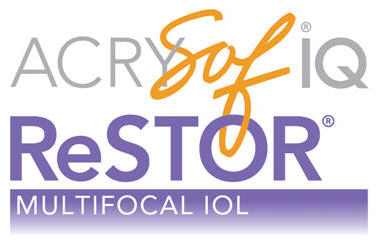 ReSTOR
ReSTOR
The AcrySof ReSTOR lens is a type of intraocular lens that works to correct vision in cataract or presbyopia patients who have trouble focusing at near, far, or middle distances. Instead of using glasses, contacts, bifocals, or trifocals, most patients will be able to focus seamlessly between varieties of distances following the ReSTOR implant. Many patients are able to throw away their reading glasses with their newfound independence!
After the eye’s natural clouded lens is removed during cataract surgery, the ReSTOR lens is implanted. Apodized diffractive technology helps the small convex lens distribute light appropriately based on your focusing attempts. Unlike traditional cataract surgery where the lens is removed and replaced with a monofocal lens; most ReSTOR patients will not need reading glasses following the procedure.
Good candidates for the ReSTOR lens include patients with healthy corneas who are developing cataracts or who have the condition of
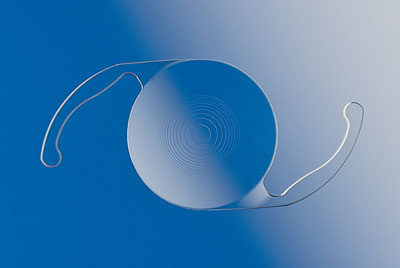
presbyopia, a condition where the eye’s lens loses flexibility and causes near vision difficulties. Patients who have already had cataract surgery cannot have the ReSTOR procedure.
More information about ReStor can be found at AcrySof®. In addition, extended information regarding the FDA approval of Phakic lens can be found here: http://www.fda.gov
Trust your vision enhancement to the ReSTOR leaders, contact Berg·Feinfield Vision Correction today for your personal eye care consultation.
Crystalens
Improve near vision, far vision, or anything in between following cataract surgery with the modern Crystalens procedure. With Crystalens, patients can regain their natural focusing power with a replacement of the eye’s crystalline lens. This single-focus intraocular lens (IOL) helps patients compensate for a loss of near, far, and in-between focusing power, while successfully accommodating between all distances by moving along with the muscles in your eye. Seamless focusing is the quality that makes Crystalens so popular, whereas, with traditional fixed focal replacement lenses, patients had to choose between crisp near or far vision.
Crystalens may be used as a cataract or vision correction procedure. Based on your refractive correction needs, your Crystalens will be customized to improve vision. During your Crystalens procedure, your doctor will numb the eye with eye drops, create a small incision in the outer layer of the cornea, and use ultrasound technology to gently break up the cataract-laden lens and remove it. The custom Crystalens is gently set in its place and the incision begins healing. After a short instruction period, you will be able to focus seamlessly between all distances without the use of glasses or contacts!
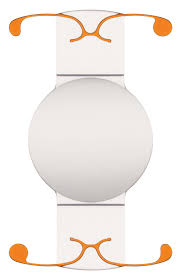 You may be considered a good candidate for Crystalens if you are suffering from cataracts and desire vision improvement.
You may be considered a good candidate for Crystalens if you are suffering from cataracts and desire vision improvement.
Extended information regarding the FDA approval of Phakic lens can be found here: www.fda.gov
Improving vision with the Crystalens specialists has never been easier! Contact Berg·Feinfield Vision Correction today for your vision enhancement consultation.
Crystalens FAQs
Q. What makes Crystalens such a unique intraocular lens?
A. Because Crystalens allows recipients to focus clearly between near, far, and middle distances, it offers a distinct advantage. Previous intraocular lens implants forced patients to choose which single vision they preferred, near or distance, forcing them to wear glasses or contacts to achieve a full range of clear vision. Crystalens allows patients to see better at all distances!
Q. Will Crystalens allow me to have perfect vision?
A. The Crystalens procedure is designed to improve vision depending on a patient’s refractive error. Although the majority of patients will achieve perfect (20/20) or near-perfect (20/40) vision, there is no guarantee that the technique will provide unflawed results for everyone. Each person’s eyes are uniquely different, and your doctor will consider a variety of factors before recommending this procedure. According to a recent Crystalens clinical trial, 98% of participants could pass a driver’s test!
Q. Will Crystalens improve my 'middle vision'.
A. Your middle vision, or visual acuity at arm’s length, should show marked improvements following the Crystalens procedure. Many patients are able to throw away trifocals, which were once needed to help achieve focus between distances. Crystalens offers automatic focusing power, mimicking the accommodation ability of your eye’s natural lens.
Q. Can Crystalens help me?
A. Dr. Berg or Dr. Feinfield will need to give you a thorough eye examination before this question can be answered. Because everyone’s eyes are different, we cannot be certain that Crystalens will be an effective treatment until specialized measuring and eye evaluation is performed. Generally, good candidates are healthy, have healthy eyes free of disease, and have not had cataract surgery previously.
Q. Do I need the Crystalens implant in both eyes?
A. Most patients with cataracts will see development in both eyes, so Crystalens is typically performed on both eyes. However, if only one eye shows signs of cataract development, you may opt to have only that eye treated. Even if treatment in both eyes is recommended, you will generally have one eye done at a time with a period of two to three weeks between procedures.
Q. When will I see the benefits of improved vision?
A. You will be asked to have someone drive you home from surgery as it may take a few days to recover vision. Distance vision will clear in 1 – 2 days, with middle and near vision improving within 2 weeks. Your vision may not reach its full focusing power for a few months. Your doctor will inform you of what to expect and give you suggestions for strengthening the focusing power of your eyes. Although most Crystalens patients do not need vision aids once healing is complete, some patients may require glasses to achieve optimal visual acuity.
Q. What are the side effects associated with Crystalens?
A. A very small number of Crystalens patients experience glare, diminished night vision, halos, or sensitivity to light. Many of these side effects are temporary, but there are effective ways to minimize these problems if and when they occur. Your doctor will discuss all risks and side effects with you during your eye consultation.
Q. How long is the healing process after the Crystalens procedure?
A. Your eye will be sensitive following surgery, so it is important you follow your doctor’s post-operative instructions. He will give you a timetable for when you can resume work and other activities, depending on your ability to heal quickly. Most patients are able to return to work, drive, and perform normal activities within a few days, with limitations on exercise, makeup-wearing, lifting, sports, and any activities where eye contact is possible.
Find out more about the benefits of the Crystalens procedure from the vision care specialists at Berg·Feinfield Vision Correction. Call or Email our office today for your eye care consultation.
TORIC
TECNIS
TECNIS Symfony
The Tecnis Symfony® Intraocular Lens is a multifocal IOL that provide continuous high-quality vision following cataract surgery. The purpose is to improve visual acuity at any distance, simultaneously decreasing the effects of presbyopia to help people focus on near objects. This release also includes a version of the IOL lens for people with astigmatism. The lens is an improvement on the traditional monofocal IOLs being used, which are designed to improve distance vision at the expense of seeing things closer up.
The Tecnis Symfony® IOL was FDA-approved in 2016 and has been making waves in the ophthalmology world since. What makes this IOL so special? It’s the first IOL designed specifically with presbyopia in mind.
If you are have been dealing with presbyopia for some time, you know how hard it can be. Now imagine what it's like to have presbyopia and cataracts. This is a recipe for some serious vision problems. Fortunately, the Symfony® IOL corrects both.
Premium Lens Evaluation
If you're interested in what Premium Lens might be right for you, take our Premium Lens Evaluation online today!



 ReSTOR
ReSTOR
 You may be considered a good candidate for Crystalens if you are suffering from cataracts and desire vision improvement.
You may be considered a good candidate for Crystalens if you are suffering from cataracts and desire vision improvement.







